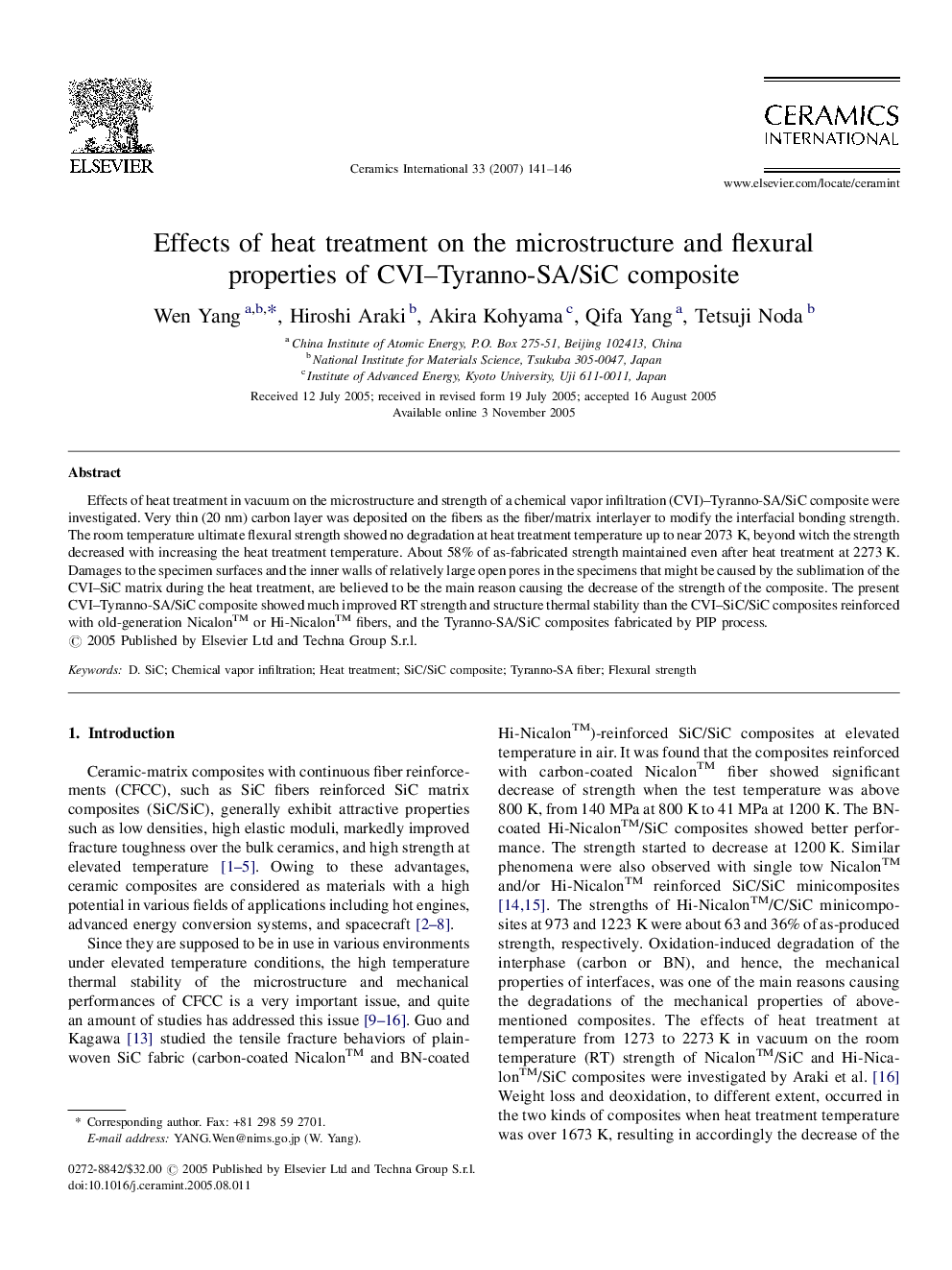| Article ID | Journal | Published Year | Pages | File Type |
|---|---|---|---|---|
| 1465090 | Ceramics International | 2007 | 6 Pages |
Effects of heat treatment in vacuum on the microstructure and strength of a chemical vapor infiltration (CVI)–Tyranno-SA/SiC composite were investigated. Very thin (20 nm) carbon layer was deposited on the fibers as the fiber/matrix interlayer to modify the interfacial bonding strength. The room temperature ultimate flexural strength showed no degradation at heat treatment temperature up to near 2073 K, beyond witch the strength decreased with increasing the heat treatment temperature. About 58% of as-fabricated strength maintained even after heat treatment at 2273 K. Damages to the specimen surfaces and the inner walls of relatively large open pores in the specimens that might be caused by the sublimation of the CVI–SiC matrix during the heat treatment, are believed to be the main reason causing the decrease of the strength of the composite. The present CVI–Tyranno-SA/SiC composite showed much improved RT strength and structure thermal stability than the CVI–SiC/SiC composites reinforced with old-generation Nicalon™ or Hi-Nicalon™ fibers, and the Tyranno-SA/SiC composites fabricated by PIP process.
